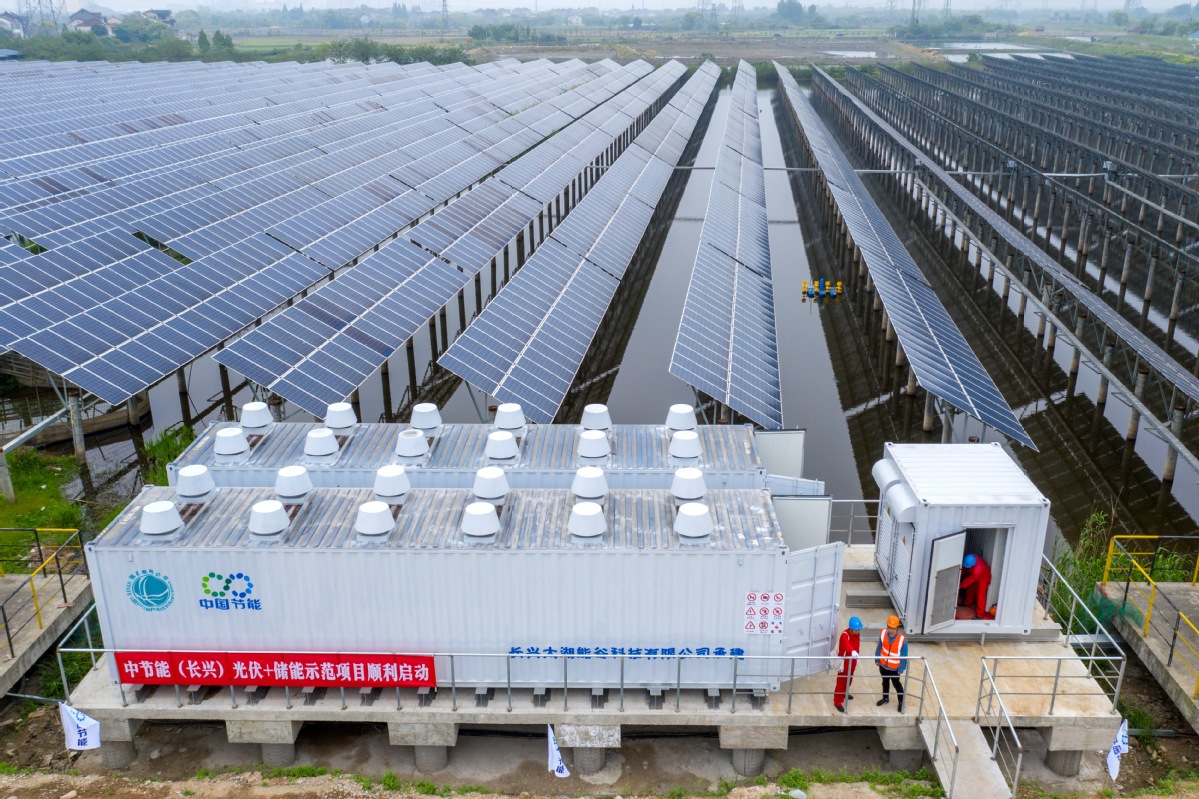China’s efforts to move electricity generation from a coal-dominated system to a mix of renewables is not only focusing on increased utilisation of wind, solar and other technologies but is also seeking to rapidly expand energy storage options.
There are a range of energy storage technologies, including molten salt solar powered heat exchange and pumped hydro, however electrochemical battery storage is an area of rapid development.
In late July 2021, China’s National Energy Administration (NEA) and the National Development and Reform Commission (NDRC) released a slew of policies to provide a blueprint to turbocharge the energy storage industry, and offer huge opportunities to enterprises in the country.

Du Xiangwan, former vice president of the Chinese Academy of Engineering, has said that “electrochemical storage will very likely represent the majority of energy storage in future”, according to industry sources. New types of electrochemical energy storage technologies are those that have power as their main output form..
PV Magazine argues that “China is expected to have more than 30 GW of cumulative storage installations by the end of 2025, and 100 GW finished by 2030.
In an article published on 18 August 2021, Xinhua gave an overview of the NEA / NRDC plan and how industry in China has reacted:
The plan encourages power generation firms to build energy storage facilities and improve their capability to shift peak loads. Hua Yin Technology, one of the pioneering companies in China’s flow battery industry, detected an opportunity soon after the policy was unveiled. “In recent years, the power storing business has become the main engine driving the company’s revenue growth,” said Fu Hongtao, vice president of the firm based in northwest China’s Shaanxi Province.
Dedicated to the vanadium industrial chain, Hua Yin Technology entered the vanadium flow battery market in 2016, and the company’s electrolyte production line now has an output value of 1.6 billion yuan (about 247 million U.S. dollars). Fu said the industry is set to make further progress as an increasing proportion of clean power sources are used across China.
Data shows that China has leapfrogged in the growth of its new energy generation capacity, as the newly added installed volume hit 119.87 million kilowatts in 2020, accounting for 63 percent of the nationwide total.
But the steady growth of installed capacity has put a strain on the country’s power system due to insufficient regulation capabilities. “Renewable energy sources including solar and wind are intermittent and volatile,” said He Gang, a professor at the Xi’an Jiaotong University (XJTU), noting that the grid will see mounting pressure as electricity is used in a continuous manner. To realize the transition to a new type of power system with new energy as the main body, He underscored that new types of power storage will play an increasingly important role.

According to the plan, the country’s total installed capacity for new types of power storing is expected to surpass 30 million kilowatts in 2025, about 10 times its present level. “It is the first time that China has set a national installed capacity goal in the sector,” said NEA official Liu Yafang, adding that the policy is not just about scale but puts forward other requirements including technology and industry standards to realize high-quality development.
Listed companies maintained their growth momentum in the first half of 2021. Power solution provider Kehua Data Co., Ltd. predicts its net profit attributable to shareholders will rise 65 percent to 100 percent year on year.
The industry’s improvements are mainly attributable to battery technology breakthroughs, said Yu Zhenhua, head of the China Energy Storage Alliance, adding that lithium batteries led the increase in newly added installed capacity, while non-lithium technologies such as flow batteries are also accelerating their pace of evolution. Noting that all technologies have their own advantages and suitable application scenarios at the moment, He said no single technology could dominate the market now and the competition of diverse technologies will continue.
To promote the industrialization of energy storage technologies, Hua Yin Technology and XJTU in April this year inked a strategic cooperation agreement to establish a flow cell innovation center.
“This is a great development opportunity for us,” Fu said, adding that the firm will partner further with the university in tech research and tap into the potential of the power storage industry. ■
Sources: Xinhua, 18 August 2021 http://www.xinhuanet.com/english/2021-08/18/c_1310134075.htm and pv magazine 08/2021
Leave a Reply
You must be logged in to post a comment.